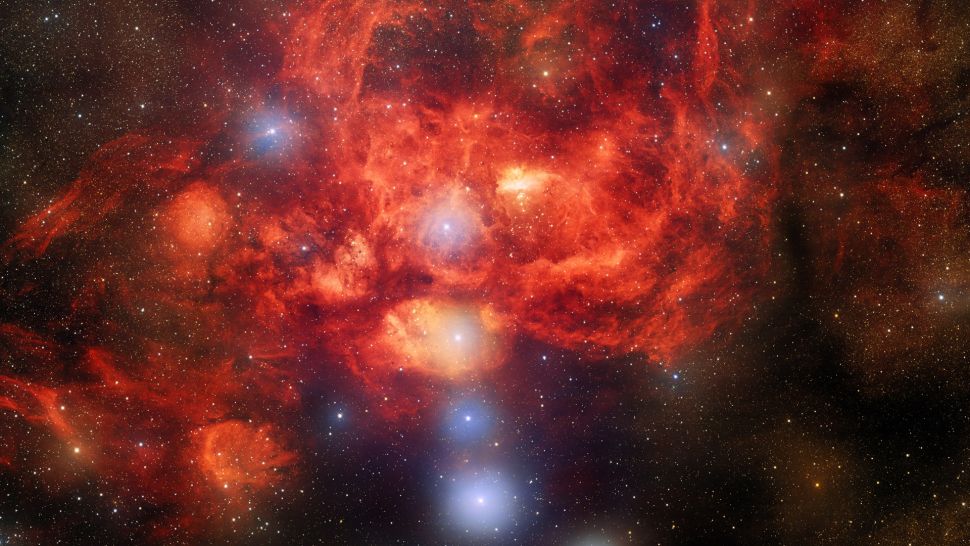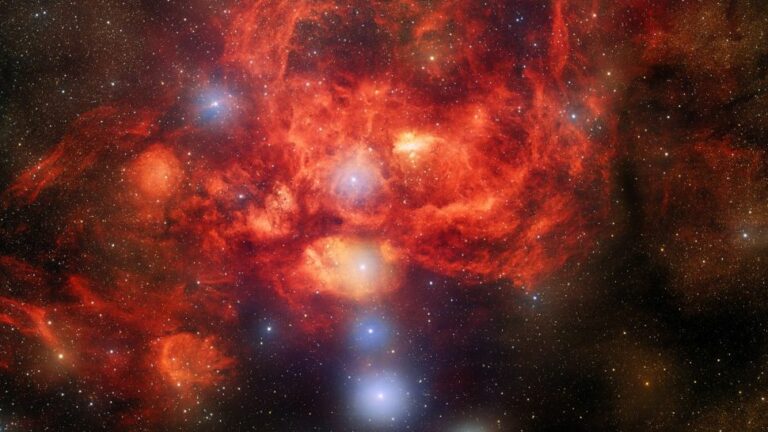In this amazing new photograph from a dark energy hunter, the “Lobster Nebula” glows crimson.
The Dark Energy Camera has just celebrated 10 years of operations.
A breathtaking new image that exposes the inside of a far-off star-forming area has been taken by a camera intended to unlock the mysteries of dark energy.
The Cerro Tololo Inter-American Observatory in Chile’s Victor M. Blanco Telescope is home to the Dark Energy Camera, a piece of equipment used as part of the Dark Energy Survey initiative to look for signs of dark energy, the elusive factor believed to hasten the expansion of the universe.

The telescope captures some amazing pictures of the universe while it looks for the enigmatic force. The new photograph, which was shown on Monday (Sept. 12), shows the Lobster Nebula, a star-forming zone located in the constellation Scorpius around 8,000 light-years from Earth.
Bright newborn stars are dispersed throughout dust and gas clouds in an area 400 light-years wide in the picture. An open star cluster, or loose collection of young, massive stars, is visible in the image’s center.
Some of the brilliant spots that surround the cluster are thought to be protostars, young stars that are still shrouded in gas and dust and are only just starting to show off their full dazzling glory.
The nebula is battered by interstellar winds, galactic radiation, and strong magnetic fields, which force the gas and dust within into twisting streams and braiding.
According to a statement from NOIRLab, which runs the gadget, the Dark Energy Camera is one of the world’s highest-performance wide-field charged-coupled device cameras, a sort of digital imaging technology that can record extremely low sources of light.
Recently, the camera, which can produce 400 to 500 photos every night, passed the mark of 1 million separate exposures. Astronomers examine the motion of far-off objects in the photographs to search for signs of dark energy.
Astronomers employed specialized filters that separate particular light wavelengths to get this particular picture. Scientists can learn more about the movements, temperatures, and chemistry of the far-off star-forming regions by looking at distant stellar clusters at these wavelengths.
The Lobster Nebula is depicted in the final image as it might appear in the sky if it were significantly brighter, captured by a combination of many exposures made with various filters and piled on top of one another.
The picture was revealed on Monday during the conference DECam at 10 years: Looking Back, Looking Forward that was hosted in Tucson, Arizona (Sept. 12).
Do not forget to share your opinion with us to provide you with the best posts !




0 Comments